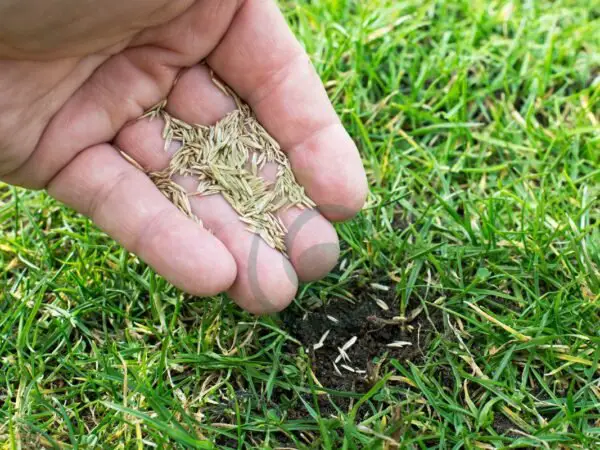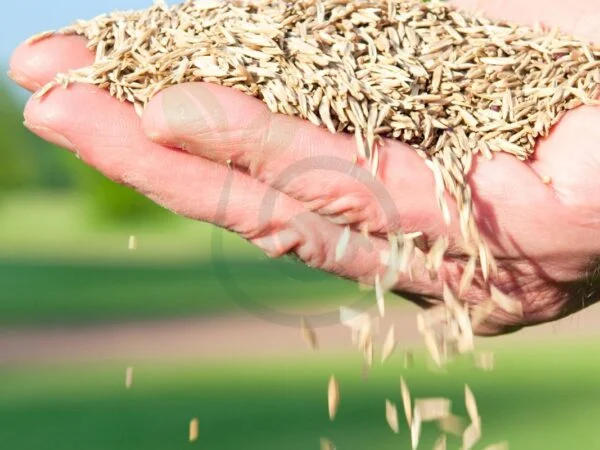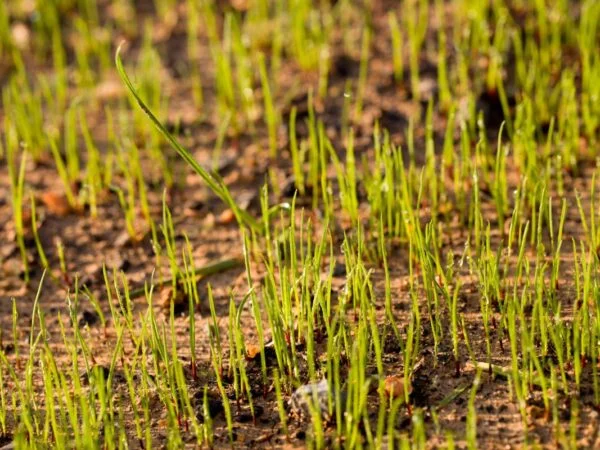Timing is crucial. The stark contrast between success and failure lies in understanding the optimal planting window for your region. In Pennsylvania, early fall stands out as the prime period for seeding new seedlings, offering cooler temperatures and ample rainfall for optimal germination and lawn establishment. However, late spring also emerges as a viable option, providing favorable conditions for grass seed establishment before the heat of summer sets in. By grasping these key planting seasons and factors unique to Pennsylvania's climate, you can ensure a lush and thriving lawn all year round.
Key Takeaways
- Consider Pennsylvania's Climate: Understand the unique climate of Pennsylvania to choose grass seed varieties that thrive in the region.
- Prepare the Site Properly: Ensure the planting site is well-prepared by removing debris, weeds, and rocks to create an ideal environment for grass seed growth.
- Select Grass Seed Wisely: Choose the right type of grass seed based on factors like sunlight exposure, soil type, and intended use of the lawn.
- Time Your Seeding: Plant grass seed in Pennsylvania during the early fall (late August to mid-September) to take advantage of optimal growing conditions.
- Implement Effective Seeding Techniques: Use proper seeding methods such as overseeding, slit-seeding, or broadcast seeding to promote even grass coverage.
- Establish a Lawn Without Tilling: Explore techniques like slit-seeding or topdressing to establish a new lawn without extensive tilling, preserving soil structure and reducing disruption.
- Care for New Turf: After seeding, follow a consistent watering schedule, avoid heavy foot traffic, and monitor for pests or diseases to ensure successful turf establishment.
Understanding Pennsylvania's Climate
Seasonal Weather Patterns
Pennsylvania experiences distinct seasonal weather patterns that significantly impact grass seed planting. Winter brings cold temperatures, while summer is characterized by heat and humidity. Understanding these patterns is crucial for successful grass growth. By aligning planting with favorable conditions, such as moderate temperatures in spring and fall, one can optimize the chances of a healthy lawn.
Regional Variations
The state's diverse geography results in variations in climate across regions, affecting the ideal time to plant grass seed. For instance, areas closer to Lake Erie may have cooler temperatures compared to regions near Philadelphia. These differences necessitate specific considerations for successful planting. Adapting strategies based on regional variations ensures that grass seeds receive the optimal conditions for germination and growth.
Impact on Grass Growth
Seasonal weather patterns and regional variations play a pivotal role in determining the success of grass growth post-planting. Factors like temperature, precipitation, and sunlight exposure directly influence how quickly and robustly grass seeds develop into a lush lawn. Considering these impacts is essential for homeowners looking to establish healthy turf, whether through sod, renovation, or lawn establishment, that can withstand varying environmental conditions.
Preparing the Site
Soil Testing
Conduct soil testing before planting grass seeds to determine nutrient levels and pH balance. This step ensures optimal conditions for successful seed germination and growth. By analyzing soil composition, you can pinpoint specific amendments needed for healthy grass establishment. Utilize soil test results to make informed decisions on applying fertilizers, lime, or organic matter.
Clearing Debris
Before planting grass seeds, clear debris such as rocks, stumps, and roots from the site. Removing obstacles is crucial for preparing a smooth seedbed conducive to new grass growth. Proper debris removal sets the stage for even seed distribution and root development, leading to a lush lawn.
Drainage Improvement
Assess and enhance drainage conditions to promote healthy turfgrass growth post-planting. Address issues like soil compaction by aerating the soil or incorporating organic matter. Improving water flow prevents waterlogging, ensuring that newly planted grass seeds receive adequate moisture for germination and establishment.
Soil Preparation and Grading
Topsoil Modification
When preparing to plant grass seed in Pennsylvania, modifying topsoil is crucial for optimal growth. By incorporating organic matter, sand, or compost into the soil, you can significantly improve its quality. This process enhances nutrient retention and fosters robust root development for the newly planted grass seeds. Different types of topsoil amendments play specific roles in creating an environment conducive to successful turfgrass establishment.
Effective Tillage
Tillage plays a vital role in the preparation of soil for planting grass seed on sloped areas. It involves mixing amendments into the topsoil and loosening it to facilitate better root growth. Utilizing appropriate equipment and techniques during tillage ensures that the soil is adequately prepared for seeding. Proper tillage practices contribute to creating an ideal seedbed by improving soil structure and promoting aeration.
Fine Grading Process
The fine grading process is essential for achieving a smooth surface suitable for seeding or sodding on sloped terrains. This phase involves several steps such as firming, smoothing, and leveling the soil to eliminate bumps and irregularities. Through fine grading, uniformity across the site is ensured, providing optimal conditions necessary for establishing new turfgrass effectively.
Selecting the Right Grass Seed
Seed Mixtures
When selecting grass seed for Pennsylvania, it's crucial to consider site conditions like sunlight exposure and soil type. Diverse species blends can adapt to varying environments, ensuring successful lawn establishment. For shady areas, mixtures with fine fescues are ideal, while sunny spots benefit from Kentucky bluegrass or perennial ryegrass.
For dry or sandy soils, opt for seed mixtures containing drought-tolerant species like tall fescue. In contrast, areas prone to waterlogging may require grass types such as creeping red fescue. Pennsylvania's diverse climate necessitates choosing seed mixtures tailored to specific site conditions for optimal growth and resilience.
Recommended seed mixtures include blends of Kentucky bluegrass, perennial ryegrass, and fine fescues for a well-rounded lawn in Pennsylvania. These combinations offer a balance of durability, aesthetic appeal, and adaptability to the state's climatic variations.
Evaluating Seed Quality
Purity and Viability
Understanding purity and viability indicators on turfgrass seed labels is essential when selecting high-quality seeds. Purity refers to the absence of weeds or other crop seeds in the mixture, ensuring that only desired grass species grow. Viability measures the germination potential of the seeds—a crucial factor influencing turfgrass establishment success.
High purity levels indicate superior seed quality by minimizing competition from unwanted plants during lawn establishment. Similarly, optimal germination percentages ensure rapid and uniform grass growth post-seeding. Certified seeds guarantee cultivar purity by adhering to strict standards during production processes.
Pure Live Seed
The concept of pure live seed (PLS) combines purity and viability factors into a single metric for assessing overall seed quality accurately. By calculating PLS percentages on turfgrass seed labels, homeowners can gauge the effectiveness of their chosen grass seeds in establishing a healthy lawn cover efficiently.
Determining Seeding Rates
When determining seeding rates in Pennsylvania based on previous soil preparation steps like grading and fertilization ensures even coverage across the lawn surface post-seeding activities. Adequate seeding rates promote dense grass growth while reducing weed encroachment risks over time.
Optimal Timing for Seeding
Best Planting Windows
Planting grass seed in Pennsylvania requires careful consideration of the best planting windows. The ideal time to sow grass seed is during the early fall, specifically between mid-August and mid-September. This period allows the seeds to establish before winter sets in.
It's essential to avoid planting grass seed during the summer months due to the intense heat and potential lack of rainfall. Seeding too late in the fall may not give the seeds enough time to develop strong root systems before winter arrives.
In contrast, spring can also be a suitable time for seeding, typically between late April and early May. However, this window is narrower than in the fall as it's crucial to plant before temperatures rise significantly.
Weather Considerations
When determining the best time to plant grass seed in Pennsylvania, consider weather conditions. Ensure that you choose a period with moderate temperatures and ample moisture for optimal germination.
Avoid planting during periods of extreme heat or drought as this can hinder seed germination and growth. Aim for a time when there is consistent rainfall or plan on regular watering if rain is scarce.
Seeding Techniques
Various Methods
When considering the best time to plant grass seed in Pennsylvania, it's crucial to explore various seeding techniques. Overseeding involves spreading grass seed over an existing lawn, helping fill in bare patches and improve overall density. Slice seeding, on the other hand, uses a machine to create small furrows in the soil for optimal seed-to-soil contact.
Implementing aeration and overseeding can also be beneficial, as it helps alleviate soil compaction while promoting new grass growth. Another effective method is hydroseeding, which involves spraying a mixture of grass seed, mulch, fertilizer, and water onto prepared soil. Each technique offers unique advantages based on specific lawn conditions and desired outcomes.
Importance of Mulching
Mulching plays a vital role in successful grass seed germination by providing essential moisture retention and protection from harsh weather conditions. It acts as a protective barrier against erosion, helping seeds establish strong root systems for long-term growth. Mulch aids in maintaining consistent soil temperatures critical for optimal seed development.
Lawn Establishment Without Tilling
Renovation Tips
To renovate your lawn effectively, consider overseeding as a way to fill in bare patches and improve grass density. Overseeding helps enhance the overall appearance of your lawn by promoting healthy growth.
Choose high-quality grass seed that suits the specific conditions of your region. Select a blend that includes different types of grass for resilience and adaptability.
Before overseeding, make sure to mow your lawn short, allowing the new seeds to make direct contact with the soil for optimal germination. After spreading the seeds evenly, lightly rake them into the soil for better seed-to-soil contact.
Watering is crucial during the overseeding process. Keep the newly seeded areas consistently moist but not waterlogged. Avoid heavy watering sessions that may wash away the seeds before they have a chance to germinate properly.
Consider using a starter fertilizer after overseeding to provide essential nutrients for seedling growth and establishment. Look for fertilizers specifically designed for new establishments or renovations to support healthy root development.
Regular maintenance is key after overseeding. Monitor watering schedules, ensuring consistent moisture levels without overwatering or letting the soil dry out completely. Stay vigilant against pests and diseases that can hinder new grass growth.
Caring for Newly Established Turf
Essential Watering Practices
New grass seedlings require consistent moisture to establish properly. Water deeply but infrequently to encourage deep root growth.
Overwatering can lead to shallow roots and vulnerability to drought. Monitor soil moisture levels regularly to adjust watering frequency.
Proper Mowing Techniques
Mow new sod or seedlings at the recommended height, typically around 3 inches, to promote healthy growth and shade out weeds.
Avoid cutting more than one-third of the grass blade length in a single mowing session to prevent stress on the newly established turf.
Fertilization Guidelines
Apply a balanced fertilizer specifically formulated for new grass or sod according to the manufacturer's instructions. Fertilize in early spring and late fall for optimal results.
Avoid over-fertilizing as it can harm the young grass plants. A soil test can help determine specific nutrient requirements for your lawn.
Weed Control Strategies
Regularly inspect your newly established turf for any signs of weeds and promptly remove them by hand before they have a chance to spread.
Consider using pre-emergent herbicides specifically designed for new lawns to prevent weed seeds from germinating without harming the young grass.
Summary
You now have a solid understanding of Pennsylvania's climate, site preparation, soil grading, grass seed selection, optimal seeding timing, techniques, non-tilling methods, and post-seeding care. By following these steps, you can ensure a successful grass seeding process tailored to Pennsylvania's unique conditions. Remember to adapt these guidelines to your specific lawn and location for the best results. Now it's time to put your knowledge into action and create a lush green lawn that thrives in Pennsylvania's climate.
Frequently Asked Questions
When is the best time to plant grass seed in Pennsylvania?
The optimal time to plant grass seed in Pennsylvania is during late summer to early fall. This period allows the seeds to establish before winter and ensures successful growth in the following spring.
What factors should I consider when selecting the right grass seed for planting in Pennsylvania?
Consider factors such as sunlight exposure, soil type, and intended use of the lawn when selecting grass seed for Pennsylvania. Choose a seed variety that thrives in Pennsylvania's climate and matches your specific lawn needs.
Is tilling necessary for establishing a lawn with grass seed in Pennsylvania?
While tilling can help improve soil conditions, it is not always necessary for establishing a lawn with grass seed in Pennsylvania. Alternative methods like overseeding or using a slit seeder can be effective without extensive tilling.
How can I care for newly established turf after planting grass seed in Pennsylvania?
After planting grass seed in Pennsylvania, ensure proper watering, mowing at the correct height, and avoiding heavy foot traffic on newly established turf. Follow recommended maintenance practices to support healthy growth and establishment of your new lawn.
What are some seeding techniques recommended for planting grass seed in Pennsylvania?
Effective seeding techniques for planting grass seed in Pennsylvania include broadcast seeding, overseeding existing lawns, or using a slit seeder for larger areas. Properly preparing the site and following recommended seeding rates are crucial for successful results.
Image Source: Paid image from CANVA





